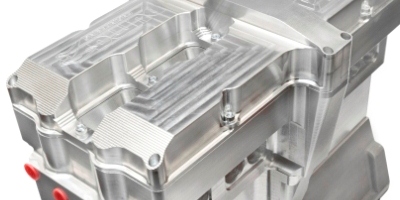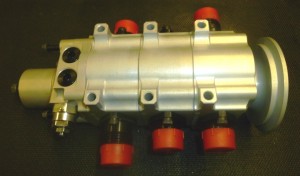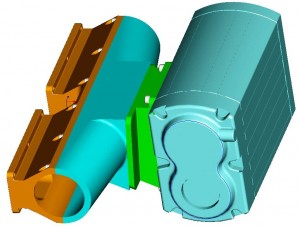In the first of a series of articles, Puma Engineering and King Racing bring you a step by step pictorial history of the build of the state of art Gulf Oil / Grand Prix Originals Top Fuel motorcycle.
The design brief was simple, to build the most advanced machine of its type in the world using the very latest technologies from the workshops of Puma Engineering and the team’s blue chip associate partners. To that end, the engine choice was simple, the very latest 12V DOHC with idler gear cam drive from Puma Engineering.
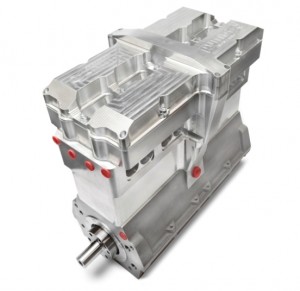
The engine features an 82mm CrMo linered bore X 75mm stroke billet steel crankshaft resulting in a capacity of almost 1585cc. The crank and cases are designed for maximum strength using a gear drive assembly for the cam chain that allows for optimum strength in the area of weakness in a conventional motorcycle crankshaft design. The benefit of this construction is that traditional aftermarket cylinder heads can be used, rather than a bespoke (and more expensive) side driven camshaft design used in the past to overcome this problem.
In addition, despite featuring plain bearing journals the crankshaft is positioned in two large precision roller bearings at each end to provide a very high degree of strength to cope with the enormous radial loadings caused by the primary and ancillary drives at either end.

Another unique feature of the engine is its use of Puma manufactured CrMo liners in the billet aluminium cylinder block. These `sleeves’ although tough to machine are stronger than the usual iron types used in other engines and perfectly complement the pistons supplied by JE Pistons. The liners maintain their shape even under extreme heat conditions and do not easily `oval’, and the pistons made to Puma specifications are coated and then have their skirts buttoned in Puma workshops using a grade of PEEK engineering polymer than the usual PTFE favoured by other companies.
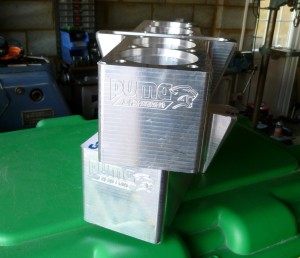
Forged aluminium rods are used with the excellent industry standard Top Fuel Wrist pins from APE securing the pistons and maintaining planarity under the high loads experienced by the tremendous combustion pressures of a supercharged nitromethane engine.
Lubrication to the engine is provided through a dry sump system using a 3 stage Puma designed gear pump delivering the Gulf Oil Max Plus 20W50 held in the bespoke Pro Alloy Motorsports fabricated tank and fed through lines and fittings provided by market leaders in fluid handling, Goodridge. The design of the pump permits coaxial drive of the fuel pump using a V band clamp, and alleviates the need for a specific additional drive pulley and assembly.
Atop the block sits the Puma 3V per cylinder billet head. The head uses valve train provided by Kibblewhite with two 31mm austinetic intake valves yet only one 41mm nimonic valve run through Colsibro exhaust and Ampco intake valve guides.
The head is extremely resilient having been specifically designed to use aluminium bronze combustion hemisphere `skulls’. This combination of a single exhaust valve and skull ensures a very wide operating window for extreme operating conditions, and permits easy head repair if ever required. Each cylinder benefits from a twin plug head design, ignited by the powerful dual ProMag 44A magnetos that the bike features.
The camshafts are bespoke billet items from Kent Cams running in replaceable Kawasaki style plain bearings, and driven by chain guided by cam sprockets and cam chain idler gears supplied by APE.
Head to block sealing is provided by a one piece copper head gasket supplied to Puma specifications by Cometic Gaskets Europe.
The cylinder head was designed with the features of the latest precision screw supercharger, the HPS 2.1 stocked by Puma. This blower will be spinning at a maximum rpm of around 13000 and provides an astonishing 430 litres of air every second through their own matching carbon fibre injector hat.
The injector hat also locates the unique Puma barrel valve feeding over 11gpm of fuel at max rpm per minute , the only such device designed specifically for Top Fuel motorcycles, and their pneumatic `idle up valve’ that permits an easy increase in rpm when in prestage to take up clutch pack and drive train slack.
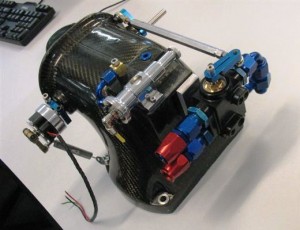
An extremely important factor in the effective use of supercharging is inlet manifold design. After poring over the CFD program for many hours to best convey the blower pressure and minimise cylinder bias the following design was reached:
The next article will cover the chassis design and build.


